ODINGA vs RUTO
Kenya tense ahead of its highly competitive presidential vote
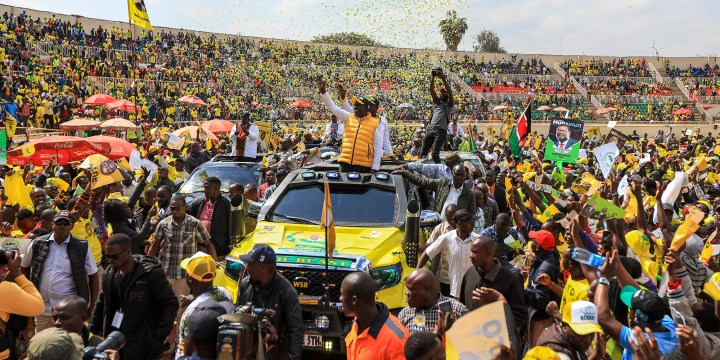
Kenya is bracing itself for one of its closest and most unpredictable elections as Raila Odinga, the perpetual also-ran, faces off in what will probably be his last shot at the presidency, against vice president William Ruto on Tuesday.
Raila Odinga, 77, lost the past three previous and disputed Kenyan presidential contests, but this time polls show him winning in the first round with more than 53%. That would avoid an even more tense run-off against Ruto, 55. Some analysts caution that Ruto, running on a populist ticket, could “do a Trump or a Brexit” and outpace his chief rival on the home straight.
The potential for violence when the results come in is always quite high in Kenya and every election inevitably raises the spectre of a replay of the killing of more than 1,100 people in the political violence, mainly in the Rift Valley, after the 2017 polls.
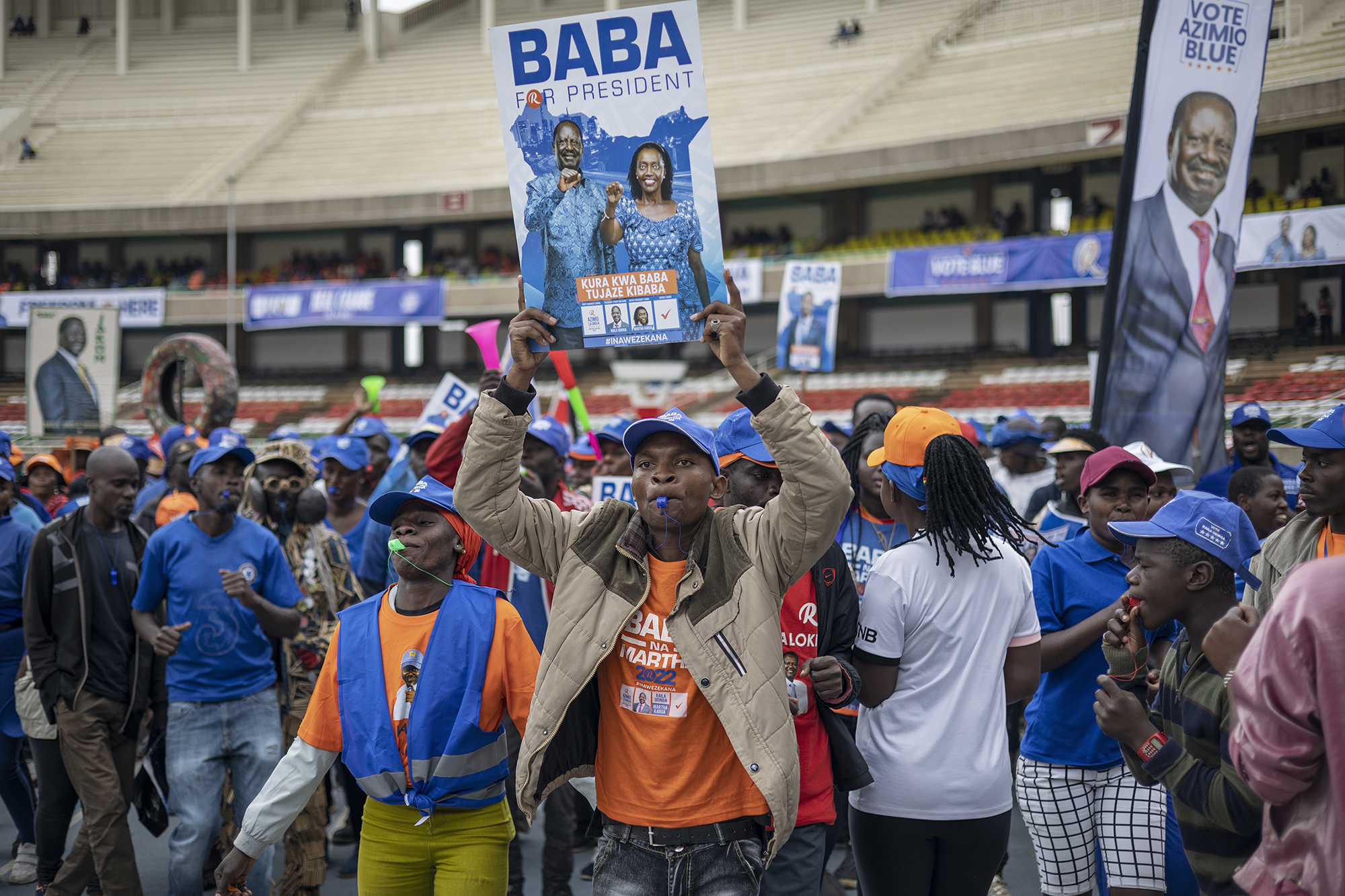
Supporters cheer during a rally for Raila Odinga, presidential candidate for the Azimio La Umoja Coalition, in Nairobi, Kenya, on 6 August 2022. Kenya’s leading presidential candidates ramped up their pledges to address the spiralling cost of living and growing inequality as their campaigns headed for the finish line before next week’s election. (Photo: Michele Spatari / Bloomberg via Getty Images)
Few are expecting anything on that scale this time, though the potential for violence still remains high, according to a report by the independent National Cohesion and Integration Commission, because of old conflicts and mistrust of institutions.
In particular, neither ordinary Kenyans nor analysts nor politicians have gained much faith in the Independent Electoral and Boundaries Commission (IEBC). After Uhuru Kenyatta beat Odinga in the August 2017 elections, the Supreme Court annulled the results because it said the IEBC had run them so badly.
The court forced a run-off which Kenyatta won after a boycott by Odinga because he said the IEBC remained unreformed. Analysts say the IEBC has still not changed fundamentally. It even has the same chairperson, Wafula Chebukati, though it has made some changes to the systems which failed in 2017.
‘Illusion of choice’
Some analysts have characterised this election as “the illusion of choice”, because it offers so little that is new, as it is effectively a two-horse race in which Kenya’s 22 million voters can really only pick between two veteran politicians who have alternated between fighting each other or allying with each other in several successive previous polls. Yet the poll is unusual in one way. President Kenyatta — who has to step down because he has completed his constitutionally limited two terms — is backing his old rival Odinga in the election, not his own vice president Ruto.
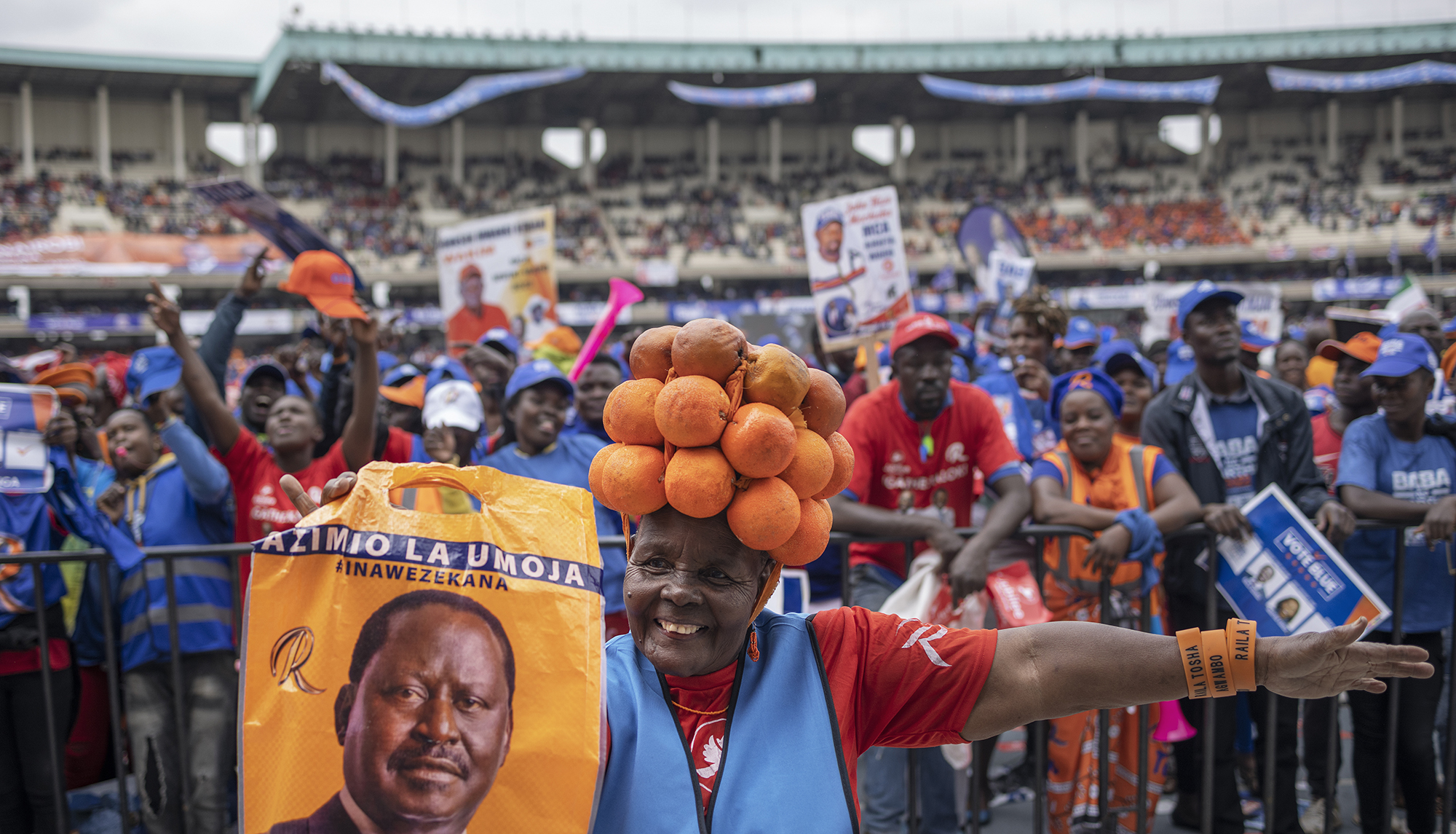
A woman wearing a headdress made of oranges dances during a rally for Raila Odinga, presidential candidate for the Azimio La Umoja Coalition, in Nairobi, Kenya, on 6 August 2022. (Photo: Michele Spatari / Bloomberg via Getty Images)
Kenyatta and Ruto fell out in 2018, ending a two-decade partnership dubbed “Uhuruto’, and Kenyatta instead launched an unexpected new alliance with his old rival Odinga with a famous public “handshake.”
That has put Ruto in the awkward position of being the opposition candidate while Odinga has conversely become in effect the incumbent candidate, backed by Kenyatta — and by state resources.
In 2017 the IEBC failed mainly because of the failure of its system for electronic checking of voter identities and for transmitting results from the country’s 40,833 polling stations to the central counting centres. The
number of polling stations has now climbed to 46,233.
Since 2017, the IEBC has introduced manual systems — including a requirement for the paper forms certifying the results from all the polling stations to be physically transported to the IEBC central counting centre in Nairobi — as a backup to the digital systems, but some analysts warn that the system is still not tamper-proof.
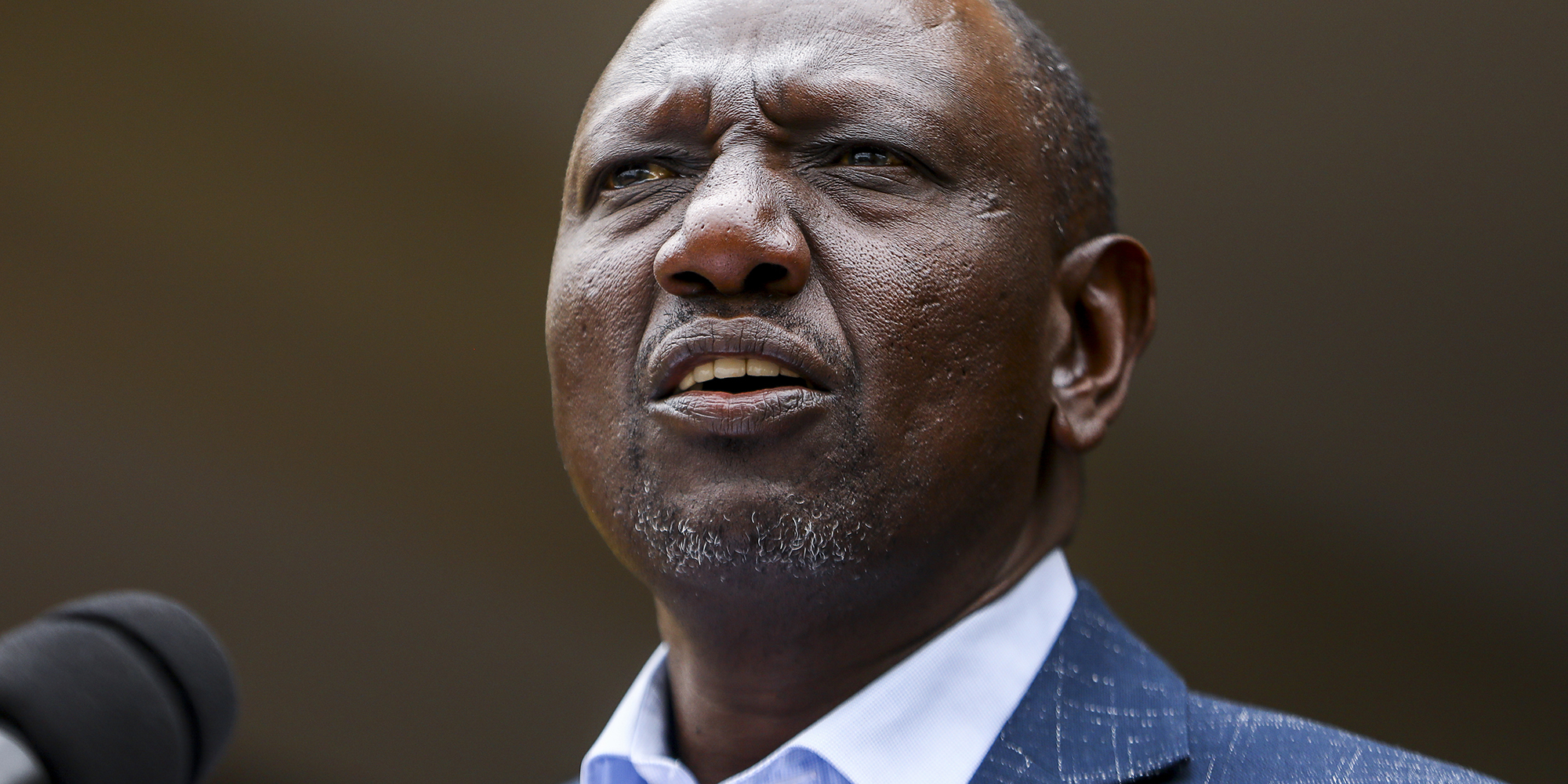
Kenya’s Deputy President and the Kenya Kwanza Coalition presidential candidate William Ruto, speaks to the media during a press conference at his official residence in Karen, Nairobi, on 4 August 2022. (Photo: EPA-EFE / Daniel Irungu)
The results could depend in part on how the IEBC performs but also on how successfully each candidate gets out his voters, as Nic Cheeseman, Gabrielle Lynch and Justin Willis note in an article in The Elephant, a Kenyan online journal.
Youth swing vote
The critical swing vote could come from youth, about three million of whom lack unemployment. This has created considerable voter apathy so that the IEBC could register only 2.5 million new voters for this election — well short of its six million target.
Odinga’s Azimio La Umoja alliance (“Resolution in Unity”) a coalition of seven major political parties, has the more efficient party machine to ensure its supporters actually vote.
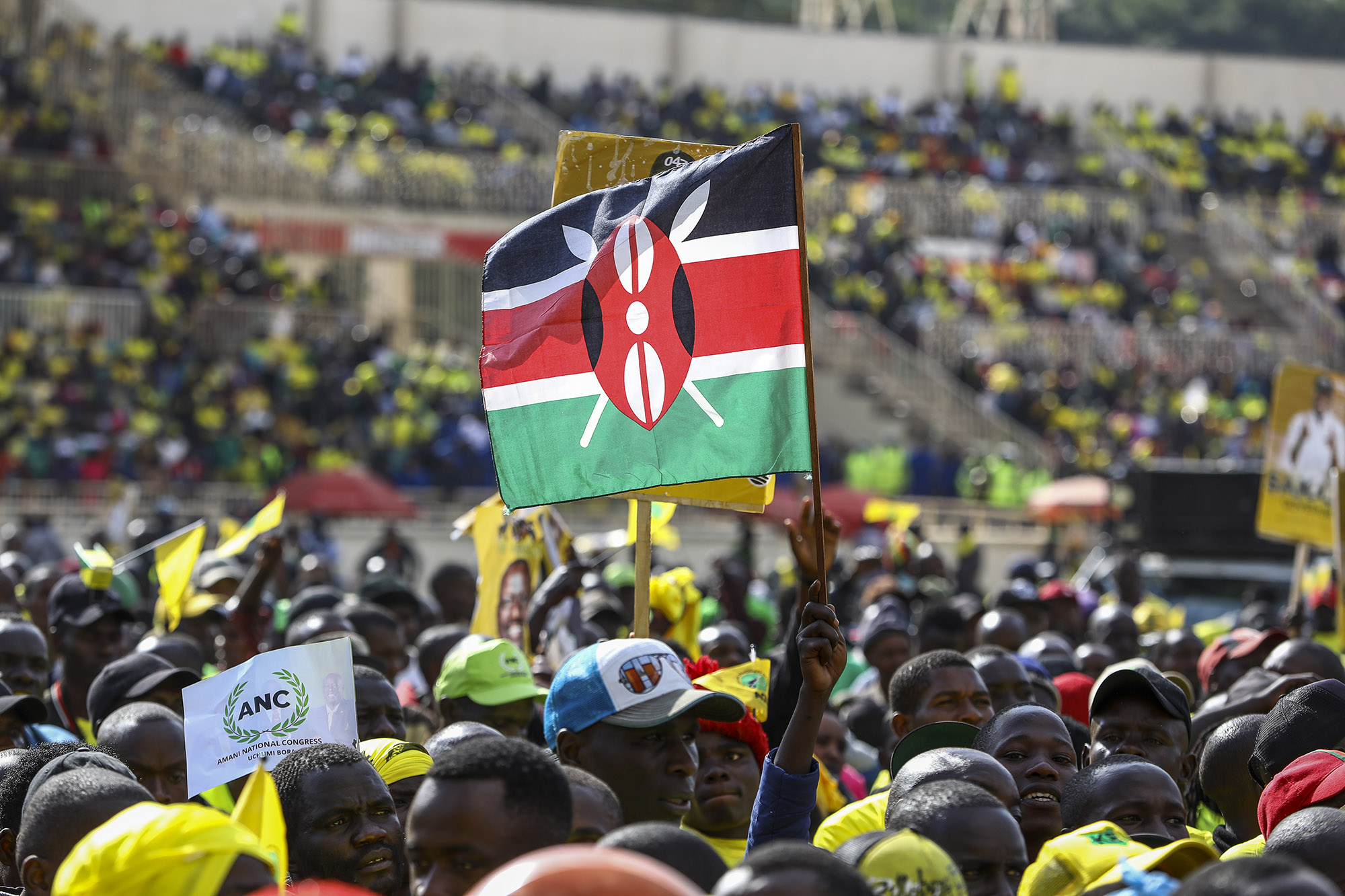
Supporters of the Kenya Kwanza Coalition shout slogans at the venue of the coalition’s last political rally attended by the presidential candidate and Kenya’s Deputy President William Ruto at Nyayo stadium, in Nairobi, Kenya, on 6 August 2022. (Photo: EPA-EFE / Daniel Irungu)
Ruto, backed by his Kenya Kwanza alliance (“Kenya First”) of nine parties, is pitching his campaign as a contest of “Hustlers” versus “Dynasties” — ie of ordinary Kenyans battling to make ends meet in a tough economic climate versus political elites. Ruto is playing on the fact that both Odinga and his main backer Kenyatta are scions of old political families. Kenyatta’s father Jomo Kenyatta was independent Kenya’s first president and Odinga’s father Oginga Odinga was his vice-president until they fell out in 1966.
Visit Daily Maverick’s home page for more news, analysis and investigations
Ruto is appealing especially to the disenchanted youth. He has promised to hand out major funds and programmes for them, in part funded by targeting “wealthy dynasties”, for wealth and land distribution.
Odinga has countered with promises such as a monthly grant of 6,000
shillings (about $60 or R1,000) to two million vulnerable Kenyans. No one seems to have much faith that many of these promises will be kept after Tuesday’s poll results are in.
Odinga in narrow lead
Ruto was clearly ahead of Odinga earlier this year — by 38% to 27% according to one poll, but in the past few weeks Odinga has pulled past him into a narrow lead. Odinga apparently overtook Ruto at the point when both chose their running mates. Ruto chose Rigathi Gachagua, an MP with little political profile, who faces money laundering charges. Odinga, by most accounts, made a far better choice in Martha Karua, a high court advocate and veteran of the struggle for multi-party democracy. Karua has solid anti-corruption credentials and she will attract women voters.
Both Gachagua and Karua are members of Kenya’s largest ethnic group, the Kikuyu, and both were strategic choices by Ruto and Odinga. Ruto is a Kalenjin and Odinga a Luo and both clearly felt the need to get Kikuyu backing.
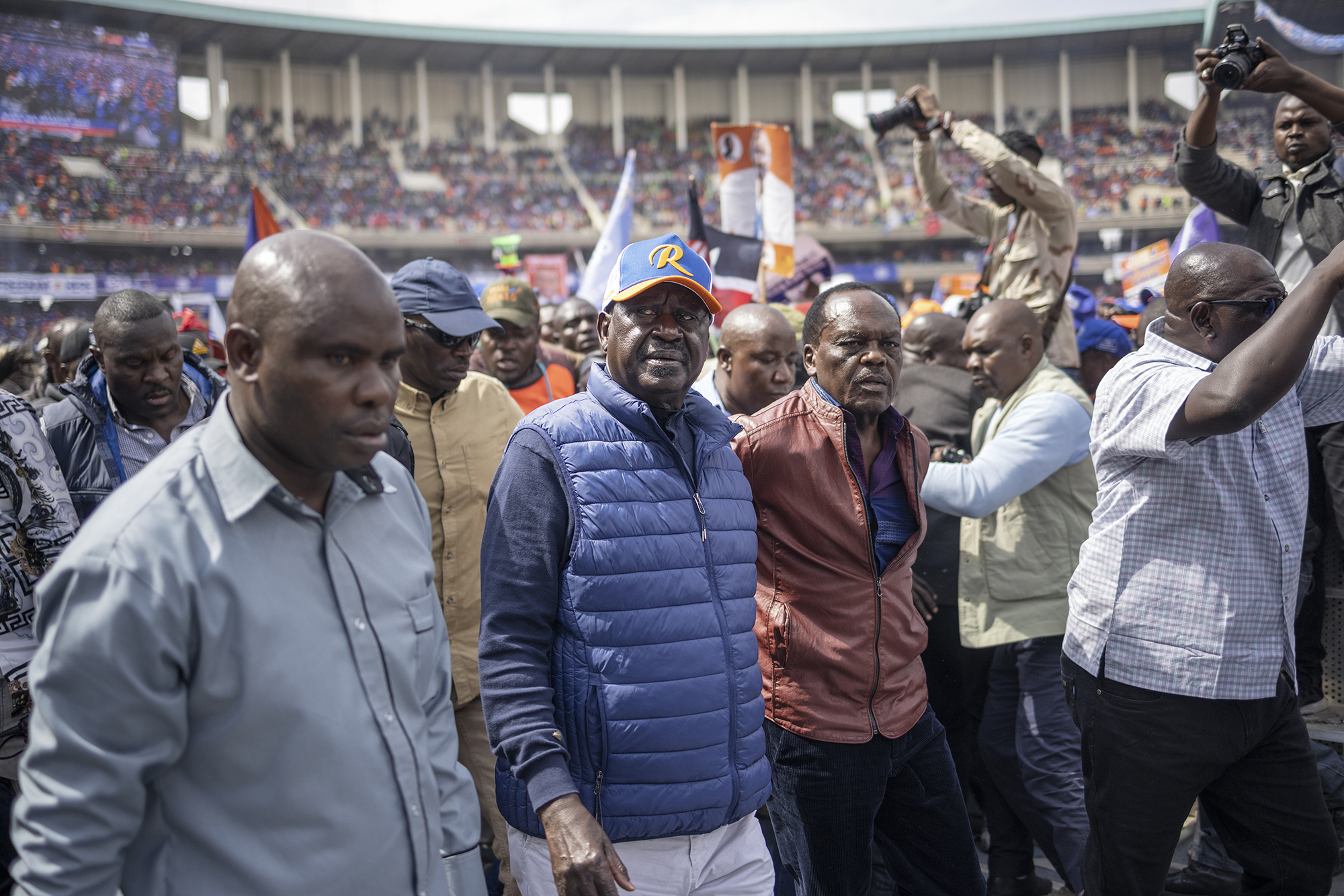
Raila Odinga, presidential candidate for the Azimio La Umoja Coalition (centre left) arrives for a rally in Nairobi, Kenya, on 6 August 2022. (Photo: Michele Spatari / Bloomberg via Getty Images)
In the past, Kenya’s shifting electoral coalitions have pitted different ethnic groups against each another.. Having Kikuyus on both tickets should help defuse the ethnic tensions which triggered so much of the political violence in the past.
“Some Kenyan observers say that the selection of Kikuyu running mates sends a powerful message that Kikuyu, Luo and Kalenjin elites can work together and….move past ethnic-based politics,” the Africa Center for Strategic Studies says.
It notes that in previous elections Kikuyu and Kalenjin clashed over contested land in the Rift Valley, while Kikuyu and Luo also battled, in part over the Luo’s complaint that they have always been cheated out of power and privilege. If Odinga wins on Tuesday, he would be Kenya’s first Luo president.
Kikuyu outreach effects
The outreach of both frontrunners to the Kikuyu has also changed the campaign dynamics. Cheeseman, Lynch and Willis note that while Odinga has maintained his traditional Luo stronghold in Nyanza near Lake Victoria, and Ruto has maintained his lead in his Rift Valley backyard, “the rest of the country will likely split their vote.
“While the majority of citizens in Nairobi, North Eastern and at the Coast appear to be backing Odinga, competition remains fierce in both areas. Similarly, while Ruto retains a lead in Central Kenya, the vote in Eastern is divided between the two candidates, and both alliances know that they can secure significant votes in all of these areas.”
Though the margin between Odinga and Ruto is very slim, analysts say what is encouraging for Odinga is that he has momentum as his support has been increasing by about 5% in each successive poll and also because his supporters tell pollsters they are more certain of voting for him than Ruto’s supporters are to vote for him.
Yet analysts also warn that many polls are conducted by phone and may be missing poorer voters who are more likely to vote for Ruto because they are attracted by his “hustler” narrative.
Some analysts predict that in such a close contest the backing of Kenyatta and the state machinery is likely to help Odinga cross the line first, no matter what happens on Tuesday.
Though many analysts are predicting a second-round runoff between Odinga and Ruto because the race is so close, others believe because the other two presidential candidates have so little support, Odinga could in fact attain the 50% plus one vote that he needs to avoid a runoff.
This is particularly so since the third-runner, George Wajackoyah — a former spy and now a lawyer who gained some support by calling for the legalisation of marijuana — recently threw his support behind Odinga, though he remains on the ballot.
Monitors
Several major international election observer groups are in Kenya to monitor the elections — including those from the African Union, the European Union, the Common Market of Eastern and Southern Africa (Comesa) the Intergovernmental Authority for Development, the Commonwealth, America’s Carter Center, South Africa’s Electoral Institute for Sustainable Democracy and the Brenthurst Foundation.
However, the key watchdogs will probably be the 5,108 local observers deployed across the country by Kenya’s Election Observation Group (ELOG), a coalition of civil society groups.
Critical to their success will be their parallel voter tabulation system (PVT) of separately registering and recording a sample of results at polling stations and constituency counting centres to check against any tampering with the results by the IEBC during transmission, as ELOG chairperson Ann Ireri explains.
The media is also expected to play a key role in verifying the IEBC results by likewise reporting the results independently from some of these stations and centres.
All observers and analysts agree that the critical moment in these elections — like those in the past — will not be on voting day on Tuesday, but when the results start coming in in the following days.
Though almost all the attention has been on the presidential race, Kenyans will have to vote six times on Tuesday — also for the governors of 47 counties, for national senators and members of the national assembly, for special seats allocated for women members of the national assembly and for members of county assemblies. DM

















 Become an Insider
Become an Insider
Comments - Please login in order to comment.